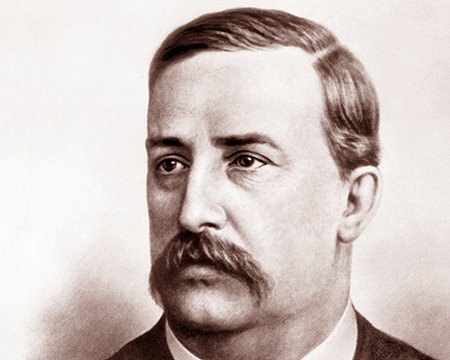One of the most satisfying things about playing in an orchestra is that you experience the music from a different perspective. It’s difficult to describe, but you feel that you’re actually inside the music, even though for much of the time you’re merely reading notes from a printed part.
When I was an innocent twelve-year old, the headmaster of our school told me one day that I should learn to play the cello. Being the kind of child who didn’t usually argue with the headmaster, cello lessons duly began. I was first taught by a lady who owned the local pub and who played the cello in her spare time. She was a large and kindly person who swept down the school corridors in a halo of beery aroma. After a couple of years, I was playing in our rustic county orchestra and much later, I found myself as principal cellist of our national youth orchestra.
 Alexander Borodin – chemist and composer.
Alexander Borodin – chemist and composer.
When I rolled up, they were rehearsing Borodin’s Second Symphony, which fortunately isn’t a particularly difficult work to play, at least as far as the cellos are concerned. On another occasion we tackled the more challenging Sibelius Second Symphony which is a very different kettle of kippers. Both these works are probably the two most popular second symphonies ever written, but musically they couldn’t be more different.
Alexander Borodin (1833-1887): Symphony No 2 in B minor. Royal Concertgebouw Orchestra cond. Karel Mark Chichon (Duration: 30:14, Video: 720p HD)
Although today we associate Borodin with music, in his time he was one of Russia’s most famous research chemists and for several years before that, a medical practitioner. The second symphony took several years to complete, because of his extensive research and teaching duties as Professor of Chemistry at the Medico-Surgical Academy at St. Petersburg. It was finally finished in 1876 but before the first performance, Borodin somehow managed to lose the scores of the first and last movements and had to write them again. He described himself as “a Sunday composer” but hearing this compelling work you’d never guess.
The memorable and powerful opening theme of just eight notes (or possibly nine, depending on how you hear it) dominates the symphony and appears in many different forms along with other attractive melodies, colourful orchestration and idiosyncratic use of harmony. The second movement is a fast scherzo written mostly in the unusual time signature of 1/1 and as far as I know, this is the only example in the orchestral repertoire. The lyrical third movement is the emotional heart of the work, full of lovely melodies and delicate scoring. In the last movement it’s back to the action again with lively Slavic dances and catchy melodies.
Some contemporary critics complained that there were too many tunes and others baulked at the outlandish changes of key, which must have sounded very modern at the time. The music sometimes has a kind of Eastern feeling to it and if you know Borodin’s Polovtsian Dances there will be some familiar moments.
Jean Sibelius (1865-1957): Symphony No. 2 in D major. Danish Radio Symphony Orchestra cond. Eivind Gullberg Jensen (Duration: 45:37, Video: 720p HD)
Perhaps the weather had something to do with it, but Sibelius (sib-AY-lee-us) spent long periods of time away from his native Finland. He began work on the Second Symphony in the Italian seaside town of Rapallo in the winter of 1901 completing it a year later when he was back in Finland. At the time, Russian sanctions on Finnish language and culture were being imposed and some writers have suggested that the work might have been influenced by the ensuing struggle for Finnish independence.
No one seems to know whether Sibelius intended it as some kind of patriotic message a hundred years on, but perhaps what is more interesting to the listener is his highly individual method of composing. The symphony – like many other works by Sibelius – seems to grow organically.
Just as Borodin’s opening theme dominates his symphony, the first melodies of the Sibelius provide the seeds for organic growth, though unlike Borodin’s work this one is all about growth and development. The opening bars of repeated chords use a three note motif, followed by a clarinet melody which is actually a variation on the motif. Themes seem to appear out of nowhere and gradually become drawn in to become integral parts of the work.
The third movement leads into the last without a break and opens with a heart-warming theme. You’d never guess, but it’s simply the first three notes of the original clarinet motif played backwards. This movement is an absolute joy, with soaring melodies, moments of high tension and drama, and a long closing section (42:20) that is surely one of the finest moments in symphonic music.




